Janine NorthChief Executive Officer
Northern Devleopment Initiative Trust
Last month, I spent an evening championing the ‘northern’ story down south in West Vancouver.
The audience was keen to hear about all of the exciting projects and opportunities on the table in the province’s least known region. I believe that we have more to be proud of in central and northern B.C. than ever before.
We are not without challenges, but the opportunities for success are here – we must only reach out and take them. Here is a copy of the message I delivered in West Vancouver:
Northern Development Initiative Trust exists to serve the communities of central and northern British Columbia. How do we do that?
Our mandate, which was created through an act of legislation in 2005, is to deliver critical grant, loan and capacity building programs that sustainably dispense funding to high value projects that support community and economic development.
Another one of our objectives is to raise the profile of central and northern B.C. in regions beyond our own in an effort to attract new residents, workers and investors to the region.
$70 billion. That is the opportunity in northern British Columbia today.
It’s a big number, so large it’s difficult to fathom. But that’s what this region is standing on the cusp of – a level of diversified investment unparalleled in the history of this province.
[quote by=”Janine North” position=”CEO” company=”Northern Development Initiative Trust”]$70 billion in major capital projects are proposed across northern B.C. in the coming years[/quote]
From Haida Gwaii to the Alberta border, the streets, highways, rail lines, ports and airports are teeming with activity. New offices are opening. New construction camps are being built. Jobs are being created.
The activity is being felt across a diverse array of sectors, from energy and mining, to forestry, transportation, construction, advanced education and health care.
The north is quickly shedding its reputation as the Lower Mainland’s backyard. Instead, it is leading the charge for sustainable diversified economic development in the 21st century.
Now, back to that big number. Some $70 billion in major capital projects are proposed across northern B.C. in the coming years.
Communities from the coast to the Rocky Mountains stand to benefit – and they’re already feeling it.
Prince George, for example, experienced historic levels of employment last year with more than 50,000 people employed.
The Prince George Airport also experienced recordbreaking passenger numbers last year. And Fort Nelson, which most British Columbians never see, had the busiest small airport in the country last year.
In addition to the critical grant and loan programs the Trust already provides to dozens of communities, First Nations and businesses, we’ve have also taken a leadership role preparing the region for the onslaught of investment activity to come.
Last year, in collaboration with communities across the region we launched four investment portals to help business leaders connect with opportunities throughout central and northern B.C.
We also launched a series of business boot camps, helping to prepare small and medium-sized businesses in the north to land contracts with major projects.
But I’m not here to tell you about every little thing we’re doing. I’m here to tell the northern story – so that we as British Columbians can build a stronger north together.
Whether we’re in Fort Nelson, Prince George or West Vancouver – this province belongs to all of us, and all of us share its bounty.
Here is an example of what I mean: most people don’t know that 80% of provincial exports come from natural resources, most of them produced in the rural areas of this province. Spectra Energy’s McMahon gas processing plant near Fort St. John has been operating for decades, transforming raw gas into natural gas used to heat your homes. It also produces other products such as butane and sulfur – which Vancouverites see in their harbor every day.Similarly, northern logging is connected to log booms on the Lower Fraser River – a familiar site to anyone who visits the Tri-Cities or Fraser Valley.
And the coal that piles up at Neptune and Westshore terminals comes from the Kootenays and northeast region of this province near Chetwynd and Tumbler Ridge.
There is no question that B.C.’s success – Vancouver’s success – depends on the products that the rest of the province produces.
But we are at a crossroads in British Columbia.
Business in B.C. needs a wake-up call.
A large contingent of the province’s population has become psychologically averse to industrialization. The mines, mills and pipelines that built this province no longer match the 21st century mentality of “beautiful” British Columbia.
Our past mistakes have left us with a province with extreme uncertainty over the land base, a lack of treaties with First Nations and a relationship between industry and activism that is dysfunctional at best.
These challenges threaten the major economic projects that could propel this province toward future success. They threaten small towns and cities. They threaten the Lower Mainland.
I’ll be the first to admit that not every industrial project is right for this province. These projects must be developed responsibly and sustainably.
But we know what fuels this province. We know that it was sawmills and port activities that created some of the first jobs on False Creek, providing Vancouver’s economy with a baseline that eventually supported further diversification into new industries such as technology, film and television and others.
It was the pulp mills built in Prince George in the 1960s that supported the community and helped it grow to eventually build the University of Northern British Columbia – an institution that is now one of the city’s major employers, shares an international award with Harvard and is the second ranked undergraduate university in Canada.
The history of this province is one where the land base has provided the means to build a successful, diversified economy and first-rate lifestyle.
The economic initiatives in rural towns and smaller cities have supported Vancouver, and helped it become one of the most desirable places to live in the world.
Just the same, Vancouver’s international expertise provides rural towns and smaller cities with a connection to the rest of the world.
We are connected. We are dependent on one another. And we need to join forces to build this province together, or that $70 billion opportunity I mentioned earlier will disappear on the next tide.
The north is, in many ways, the economic engine that drives this province.
I’ll end with one thought: we stand at the frontier of the new British Columbia.


